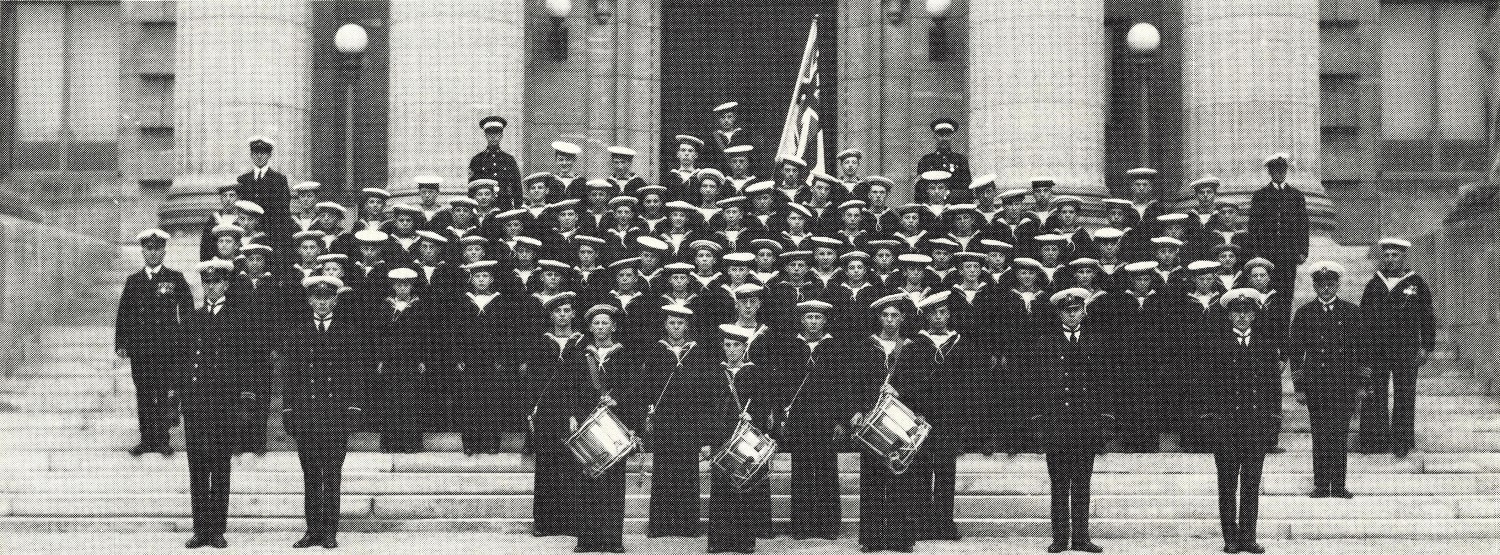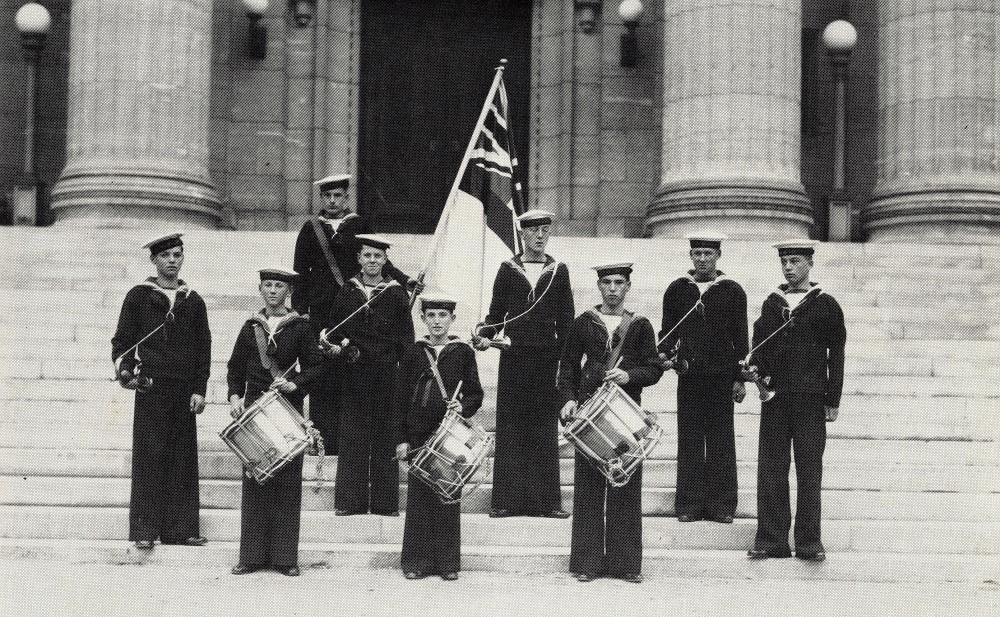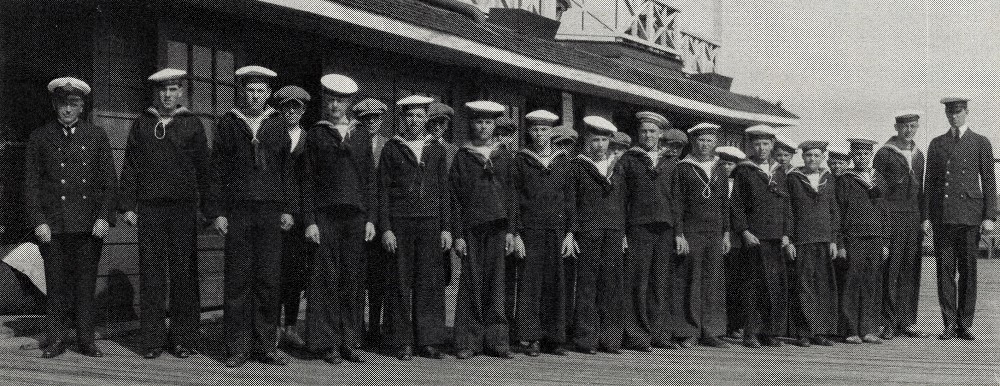

1926
 LCdr. J.R.K. Millen. |
During the early portion of 1926 the Winnipeg Sea Cadets underwent a series of changes that were to have a significant effect on the future of the organization.
Over the previous sixteen months the corps had suffered the loss of many able officers and was reduced in ranks to thirty-five cadets. Lt. Phillipson, through reasons of ill health, felt he could no longer run the organization and subsequently resigned.
It was in the same year that the Manitoba branch of the Navy League elected a new president in the person of Mr. D.C. Coleman, vice-president of western lines, for the Canadian Pacific Railways. Mr. Coleman was to remain as president for nine years and was to foster a close relationship between the C.P.R. and the Sea Cadets that was to last long after his transfer to eastern Canada.
The new Navy League executive, in its search for a new commanding officer, chose an individual who was to make his presence felt in Winnipeg Sea Cadet activities for the next thirty years. That man was LCdr. J.R.K. Millen.
In the space of eight months LCdr. Millen, through his untiring efforts, acquired new and experienced officers; built the corps to a complement of 110 cadets; and recruited as well as equipped a forty member band. Implementing his own ideas and some of those learned during a tour of eastern corps LCdr. Millen was to build the basis of sea cadets in Winnipeg. As a newspaper article of the day stated, "The Winnipeg Sea Cadets, under the command of J.R.K. Millen are rapidly coming to the fore as one of the most attractive movements for boys in the city."
One of the first steps undertaken was the transfer of quarters from Minto Armouries to the Winnipeg R.C.N.V.R. barracks in Norwood. LCdr. Millen felt that the environment and facilities at Minto Armoury left a lot to be desired and that a close association with the Naval Reserve would strengthen all facets of corps activities. The new establishment, a two story frame structure, still standing today, contained stores and lecture rooms on the upper floor while the main floor provided an area for instruction in drill, gunnery, first aid, compass, and communications.
In addition to the retention of Instructor H. Smith the officers recruited during 1926 were Lieutenant W.E. Macnamara, Chief Petty Officer A. Barratt, Chief Petty Officer George Smail, and Sub. Lieutenants Hector MacRae, Leonard Long, Macdonald Hill, and Les Usher. Drills were to continue every Tuesday and Friday evening from 7:45 to 9:15 for boys aged fourteen to eighteen with a minimum height of 5 ft. 5 in.
During the fall of 1926, in addition to the regular drills, the corps participated in a field day at the Winnipeg Canoe Club; a church parade to Augustine Church; and an inspection at the Legislative Building. The latter inspection and march past was attended by Lieutenant Eustace Brock, R.C.N.V.R.; Captain J.W. Chandler, Cadet Officer M.D. 10; F.S. Long and other prominent members of the Navy League.
Another important aspect of cadet activities in 1926 was the formation of the brass band, however, this is discussed at length on page 20.
Photographs for the year 1926 were provided by Mrs. R. Knight of Winnipeg; and Lt. Col. W.D. Macnamara, Officer Commanding, Operational Life Support Unit - Defence and Civil Institute of Environmental Medicine, Downsview, Ontario.
Corps Photograph 1926 Winnipeg Sea Cadets on steps of Legislative Building under command of LCdr. J.R.K. Millen. |
Drum and Bugle Band Members of the drum and bugle band pose on steps of the Legislative Building. |
Training Activities Lieutenant W.E. Macnamara is shown instructing cadets on the operation of a naval gun aboard the Norwood R.C.N.V.R. barracks. |
Regatta 1926 Winnipeg Sea Cadets pose for photograh at the Winnipeg Canoe Club prior to Spring Regatta, June 1926. |
Pages 16-18